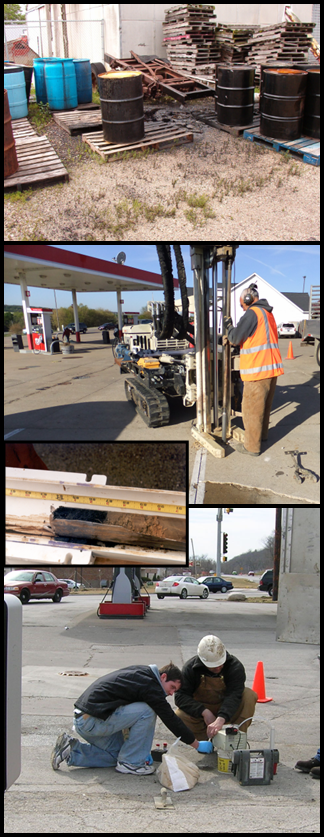RRC typically performs Phase II ESAs to address issues raised in the Phase I ESA. The Phase II ESA may involve additional file review; however it usually involves invasive sampling and analysis of the soil, groundwater or other media on site. The purpose of the Phase II ESA subsurface investigation is to confirm the presence of contamination on the property due to known or strongly suspected environmental concerns. RRC generally recommends that a full Phase I ESA be performed prior to a Phase II ESA, even when environmental issues are known or strongly suspected ahead of time. The Phase I ESA also evaluates potential off-site issues, may identify additional unknown environmental issues, and may identify mitigating factors to reduce the scope and cost of the Phase II ESA.
Subsurface investigations are conducted to establish actual soil and groundwater conditions and determine contaminant levels. RRC employs various techniques to gather subsurface information including:
- Hand auger soil sampling
- Direct-push (Geoprobe) soil and groundwater sampling
- Soil sampling and monitoring well installation with conventional auger drilling
- On-site analysis and field screening
- Cone penetrometer testing with down-hole analyses
- Passive sampling devices
Phase II investigations are designed to include any combination of the above techniques in order to gather the information needed at the most reasonable cost and with the least disturbance to the property. All soil and groundwater samples are analyzed in laboratories certified for the appropriate state regulatory programs.
RRC has investigated and assessed soils, sediments, air, indoor air, groundwater, surface water, building surfaces, and bedrock. We have experience in evaluating the nature and extent of environmental contamination through historical property research, sampling, data analysis and comparison to applicable regulatory standards, testing of the media physical characteristics, and fate and transport modeling.

